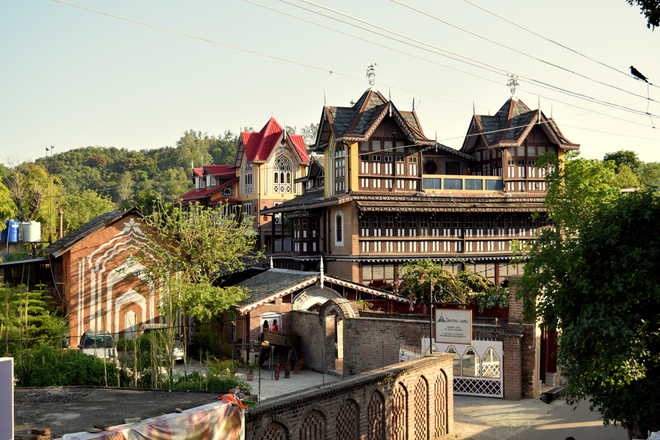Pragpur: A blend of cultures
Akash Mehrotra
Pragpur, a quaint little village in Himachal Pradesh’s scenic Kangra valley, became the first heritage village of India. With its winding cobbled lanes, mud-plastered walls and slate-roofed houses, the village looks nothing less than a miniature painting set on an aisle. As the story goes, in the early 19th century, the prosperous Kuthiala Sood community arrived and settled here. These merchants, who were exposed to architecture and arts outside the area, returned home to build mansions, schools and hospitals in architectural styles that they observed during their visits. With their efforts, Pragpur gradually transformed into a grand display of beauty and spectacular architecture that is a blend of Portuguese, Rajput and British styles.
To experience the charm of Pragpur, take a walk through the village. The square-shaped water pond in the middle of the village will lure you to spend some time around it. Built before 1868, the Taal is the core of the village and is surrounded by several old communities. Ancient temples, courtyards, even age-old windows and doors with intricate carvings, leave an everlasting impression on tourists. Most of these houses boast of fancy tilework, carved wooden eaves, ornamental towers, stained glass windows and antique collections that include rare books and etched glass objects.
Another jewel in the Pragpur cultural mélange is the Judge’s Court. The Judge’s Court, the 300-year-old ancestral home of Vijai and Rani Lal, has been converted into a heritage resort. Vijai Lal is the grandson of Justice Sir Jai Lal, the second Indian to become a judge of the Punjab High Court. Apart, from a nice stayover, this two-storey brick-red mansion, steeped in history, offers an insight into life of one of the most influential families with roots in Pragpur.
Garli: The next stop
At some 3 km from Pragpur lies Garli, the next stop. During their migration from Punjab, some Sood families settled in Garli, and started trading in timber. Some families who moved uphill used the Beas River to transport the logs downhill to Garli. With timber, came money, and prosperity. The old heritage buildings, some now converted into heritage hotels, are living tell-tales of those prosperous days.
A unique feature of architecture in Garli is the Anglo-Islamic architecture of the mansions, marked by airy spaces in the mansion, intricate carvings on the doors and windows, courtyards outside the main building, and extensive use of pillars. The out shells of these structures never fail to fascinate the visitors, and the upper turrets of these old buildings seem to dominate the entire village.
One of the marvels in the village — the Chateau Garli was restored and converted into a heritage hotel. The building was restored to its age-old glory by carefully recreating the colonial, Portuguese, Mughal, Rajasthani and Kangri architectural influences. Many architectural marvels now left to ruin. One of the buildings the Bishnu Sagar, a splendid example of the dexterity in art and design. And it isn’t the only one. There are scores of such buildings left abandoned today.
And while Pragpur has worked to restore old buildings, Garli presents a different side of the story. Nevertheless, the village is a beautiful reminder of our past. The sheer awe of historic charm and history, the delight of hospitality, the bliss of natural beauty with the Dhauladhar range rising as a backdrop to this quaint village, to a sense of pity for the mesmerising buildings that stands as beautiful ruins today.
Fact File
How to reach: Buses plying from Chandigarh and Delhi to Dharamsala pass through Pragpur. The nearest railhead Amb is 28 km.
Where to stay: Pragpur has many budget options to stay. For a luxury stay, one can opt for Chateau Garli or Judge’s Court.









